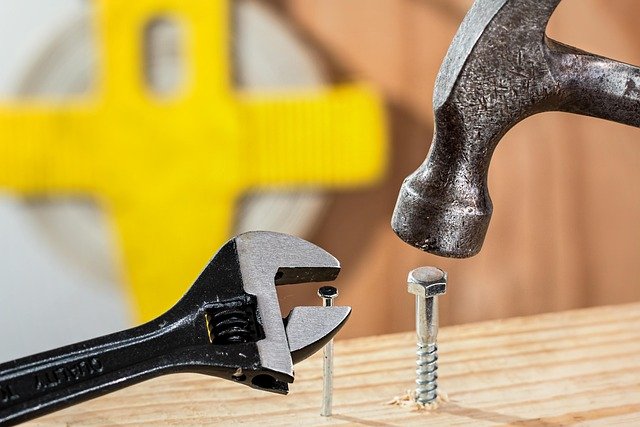Sheds Delivered and Installed: A Practical Guide to Choosing, Ordering, and Installing Your Outdoor Storage
Adding outdoor storage to your property can transform how you organize tools, equipment, and seasonal items. Sheds delivered and installed offer a convenient solution that eliminates the hassle of DIY construction. This guide walks you through the entire process, from selecting the right structure for your needs to understanding delivery logistics and professional installation. Whether you need a compact tool storage unit or a spacious workshop, knowing what to expect at each stage helps you make informed decisions and ensures a smooth experience from order to completion.

A garden shed provides valuable storage space and can enhance your property’s functionality. When you choose a shed that comes delivered and installed, you save time and effort while ensuring professional results. Understanding the process helps you prepare your site, select appropriate features, and coordinate with installation teams effectively.
Types & Materials: Picking the Right Shed
Sheds come in various materials, each offering distinct advantages. Wooden sheds provide natural aesthetics and can be painted or stained to match your property. They require regular maintenance such as treating the wood every few years to prevent rot and weather damage. Metal sheds, typically made from galvanized steel or aluminum, offer durability and resistance to pests, fire, and rot. They need minimal maintenance but may be prone to condensation in certain climates. Resin or plastic sheds are lightweight, weather-resistant, and require virtually no maintenance, though they may not offer the same structural strength as wood or metal for larger sizes.
The style of your shed matters too. Apex roofs with their peaked design allow rain and snow to slide off easily, while pent roofs with a single slope work well in spaces with limited height clearance. Some sheds feature windows for natural light, while others prioritize security with solid walls. Consider whether you need shelving, workbenches, or electrical hookups when selecting your model.
Size, Site Prep & Local Permits
Determining the right size involves assessing what you plan to store and how much space your property can accommodate. Common sizes range from small 6x4 foot units for basic tool storage to larger 12x16 foot or bigger structures that can serve as workshops or hobby spaces. Measure your available area carefully, leaving extra room around the shed for maintenance access and proper drainage.
Site preparation is crucial for a successful installation. The ground should be level, well-drained, and free from vegetation. Most sheds require a solid foundation, which might be a concrete slab, paving stones, gravel base, or pressure-treated timber frame. The foundation prevents moisture damage, keeps the structure level, and extends the shed’s lifespan. Some delivery and installation services include basic site leveling, while others expect you to prepare the foundation beforehand.
Local regulations vary significantly regarding shed installations. Many areas require permits for structures over a certain size, typically around 100 to 120 square feet, though this differs by jurisdiction. Setback requirements dictate how far the shed must be from property lines, usually between 3 to 10 feet. Homeowners associations may have additional restrictions on shed appearance, placement, and size. Contact your local building department or planning office well before ordering to understand applicable rules and obtain necessary permits.
Ordering, Delivery Options & Timeline
When ordering a delivered and installed shed, you typically work with specialized shed companies, home improvement retailers, or local builders. The ordering process involves selecting your model, customizing features such as color, windows, doors, and interior fittings, and scheduling delivery and installation dates.
Delivery methods depend on shed size and construction. Smaller pre-built sheds may arrive fully assembled on a truck and be placed directly on your prepared site using a crane or forklift. Larger sheds often come in panels or sections that the installation team assembles on-site. Delivery timelines vary based on whether you order a stock model or custom-built shed. Stock models may be available within one to three weeks, while custom orders can take four to eight weeks or longer during peak seasons.
Coordinate site access with your delivery team. Ensure there is a clear path wide enough for trucks and equipment, with adequate overhead clearance from trees and power lines. Some properties with restricted access may require special arrangements or smaller delivery vehicles, which could affect pricing.
On‑Site Installation: What to Expect
Professional installation typically takes between a few hours for small pre-built sheds to a full day or two for larger custom structures. The installation crew will confirm that your foundation is adequate and level before beginning. For panel-built sheds, they will assemble the floor frame first, then erect walls and secure the roof structure.
During installation, the team will ensure all components are properly aligned, fastened, and weatherproofed. They will install doors, windows, and any additional features you ordered. Most professional installers will also check that the shed is square and level, adjust as needed, and secure it to the foundation to prevent movement or damage from wind.
You should be present during installation to verify that the shed is positioned correctly and meets your expectations. Address any concerns immediately with the installation supervisor. Once complete, the crew will typically clean up debris and provide you with any documentation, warranty information, and maintenance instructions.
Maintenance, Warranty & Aftercare
Proper maintenance extends your shed’s lifespan significantly. Wooden sheds benefit from annual inspections for signs of rot, insect damage, or loose boards. Reapply protective stain or paint every two to three years, or as recommended by the manufacturer. Metal sheds should be checked for rust spots, which can be treated with rust-inhibiting paint. Keep gutters and drainage channels clear to prevent water accumulation.
Regardless of material, inspect your shed’s roof regularly for leaks or damage, especially after severe weather. Ensure door hinges and locks remain functional and lubricate them annually. Keep the area around your shed clear of vegetation that could trap moisture against walls.
Warranties vary widely among manufacturers and installation companies. Structural warranties might cover the frame and main components for 10 to 25 years, while roofing materials may have separate coverage periods. Installation workmanship is often guaranteed for one to two years. Read warranty terms carefully to understand what is covered, exclusions, and maintenance requirements that might void coverage. Register your shed with the manufacturer promptly and keep all documentation in a safe place.
Some companies offer aftercare services such as annual inspections, repairs, or maintenance packages. While optional, these services can be valuable if you prefer professional upkeep or lack time for regular maintenance tasks.
Conclusion
Choosing a shed delivered and installed simplifies the process of adding valuable outdoor storage to your property. By understanding material options, preparing your site properly, navigating local permit requirements, and knowing what to expect during delivery and installation, you set the foundation for a successful project. Regular maintenance and attention to warranty terms ensure your investment provides years of reliable service. With careful planning and professional installation, your new shed will meet your storage needs while enhancing your property’s functionality and organization.




